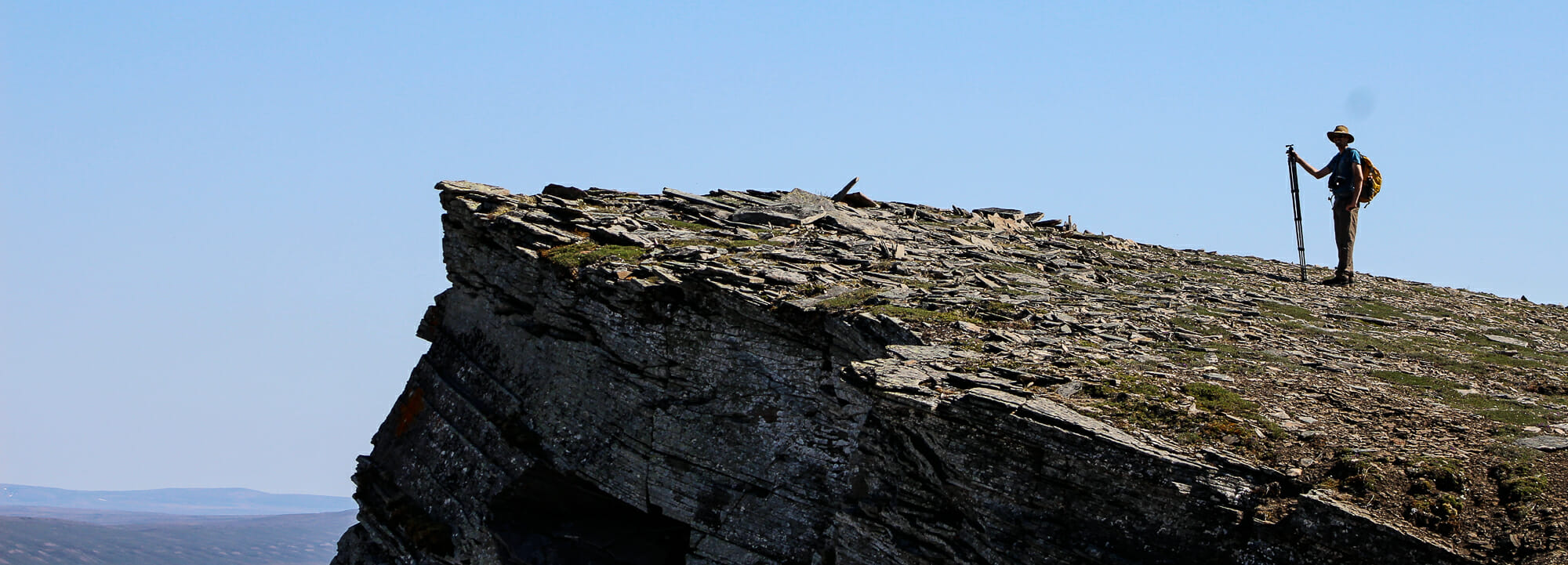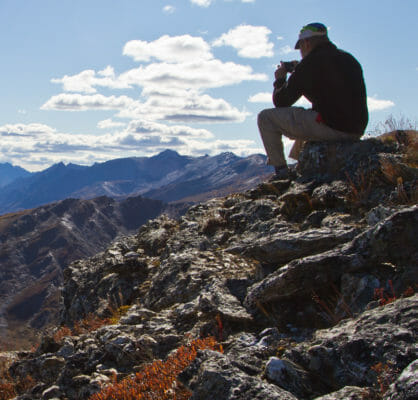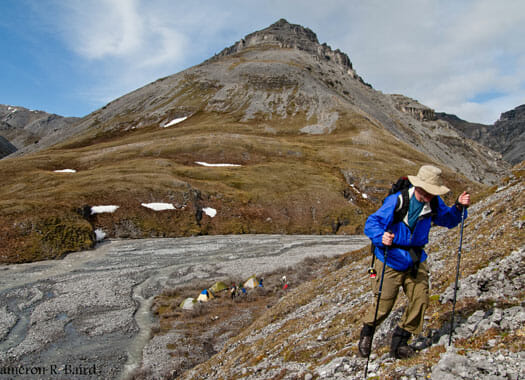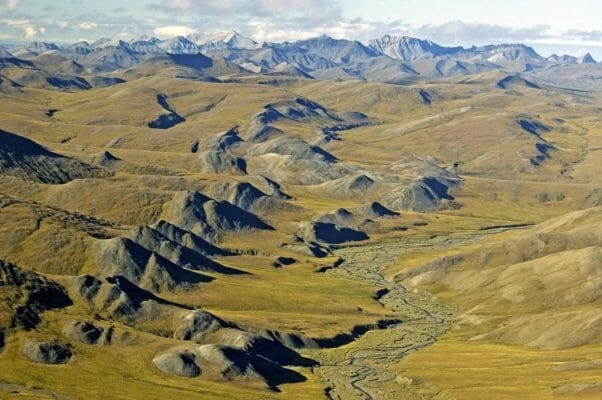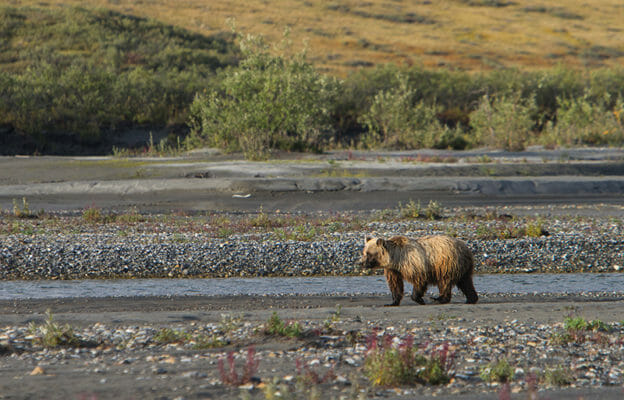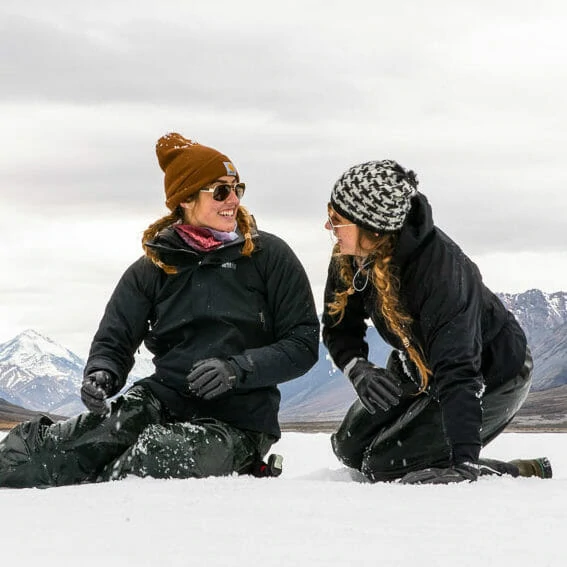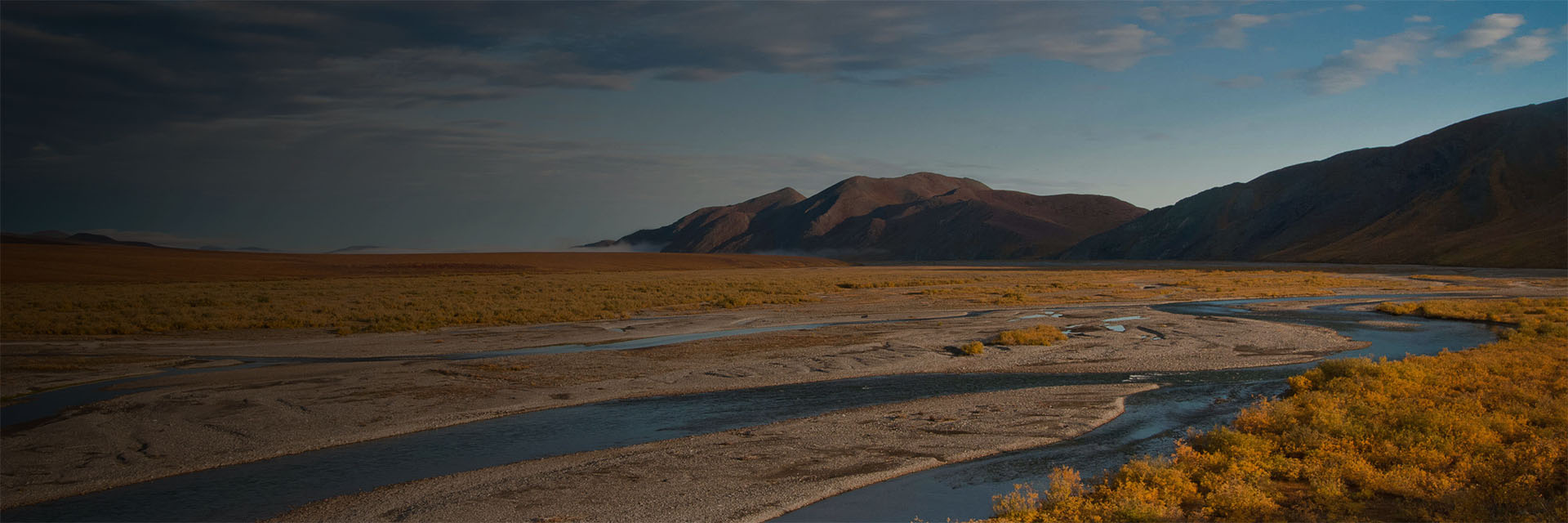Last updated: December 22, 2020
Itinerary
What follows is a general flow of events. Expect the unexpected and prepare to be flexible.
Day 0
Meet your guide for a pre-trip meeting in Kotzebue.
Day 1
Fly northwest from Kotzebue, across the Noatak River and deep into the DeLong Mountains. Our skilled pilot lands on a river bar near the headwaters of the Kugururok River. Once the pilot leaves, we’re on our own. We’ll hike several miles to the first of many lovely camps. You’ll have the evening to settle into your surroundings, hike up a ridge or just gape at the awe-inspiring scenery.
Day 2 - 7
Heading north across the arctic divide, we wind our way through the highest peaks of the DeLong Mountains. Once we cross the divide the country opens up and views stretch to the horizon. Your guide will help you find the best route through the wilderness and each evening we will make camp by a creek and have several hours to explore the area unencumbered by packs. Early in the trip there will be two small passes to negotiate. The ascents are fairly gradual and the views are unforgettable.
Day 8
Hike a short distance to meet our plane at the Kokolik River. Weather permitting we fly back to Kotzebue mid-day and change our socks.





